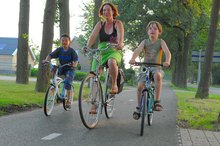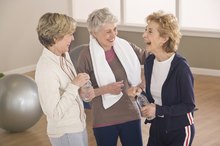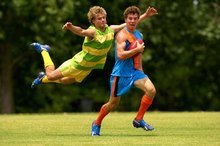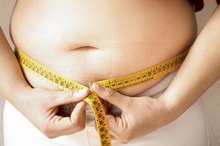What does fact checked mean?
At Healthfully, we strive to deliver objective content that is accurate and up-to-date. Our team periodically reviews articles in order to ensure content quality. The sources cited below consist of evidence from peer-reviewed journals, prominent medical organizations, academic associations, and government data.
The information contained on this site is for informational purposes only, and should not be used as a substitute for the advice of a professional health care provider. Please check with the appropriate physician regarding health questions and concerns. Although we strive to deliver accurate and up-to-date information, no guarantee to that effect is made.
Effects of Lack of Exercise & Nutrition
Poor diet and lack of exercise can lead to a plethora of physical and mental health problems. These two factors are the primary contributors to obesity, linked with an increased risk for many diseases. As of 2009, 49 states reported an obesity rate of at least 20 percent, with nine of those states reporting an obesity rate of 30 percent or more. The Centers for Disease Control reports obesity in America has increased dramatically since 1985.
Physical Effects of Poor Nutrition
Causes of poor nutrition include eating disorders, alcoholism, starvation and poor diet. Short-term effects of poor nutrition include lethargy and feeling unwell in general. The National Institute of Health links long-term poor nutrition with a number of physical issues. These include:
- obesity
- high cholesterol
- diabetes
- heart disease
- cancer
- gallstones
- gout
- many other health problems
- Causes of poor nutrition include eating disorders, alcoholism, starvation and poor diet.
- The National Institute of Health links long-term poor nutrition with a number of physical issues.
Mental Effects of Poor Nutrition
What Are the Ways Sports Improve the Quality of Life?
Learn More
Vitamin and mineral deficiencies resulting from a bad diet link with disorders of the nervous system. Malnutrition in infants can lead to mental retardation and other developmental delays, and malnutrition in pregnancy may even increase the risk of Alzheimer’s disease when the child reaches old age. Poor diet may also contribute to depression.
Physical Effects of Inadequate Exercise
A 2004 study concluded that lack of exercise was the leading cause of obesity among adolescents. Obese teens were more likely to have a sedentary lifestyle, choosing television, video games and computer activities over physical activities.
Inadequate exercise can have a long-term negative effect on personal appearance as well. A study by the University of St. Andrews reports a lack of exercise exacerbates the visible signs of aging, making people’s faces look older and fatter 12.
- A 2004 study concluded that lack of exercise was the leading cause of obesity among adolescents.
- A study by the University of St. Andrews reports a lack of exercise exacerbates the visible signs of aging, making people’s faces look older and fatter 1.
Mental Effects of Inadequate Exercise
Exercise Facts for Kids
Learn More
The CDC reports that as of 2006, more than 15 percent of Americans suffer depression and more than 11 percent have anxiety disorders. Arizona State University researchers report a direct correlation between exercise and mental health; specifically, exercise reduces symptoms of depression and anxiety. The antidepressant effects of exercise increased with duration and intensity.
A study reported in the Journal of Health Psychology showed participants in a 10-week study had significant cognitive and psychological improvement due to exercise. These benefits disappeared when participants stopped the exercise program.
- The CDC reports that as of 2006, more than 15 percent of Americans suffer depression and more than 11 percent have anxiety disorders.
- Arizona State University researchers report a direct correlation between exercise and mental health; specifically, exercise reduces symptoms of depression and anxiety.
Exercise and Aging
“Regular exercise is the only well-established fountain of youth,” writes New York Times personal health reporter Jane Brody. She cites geriatricians who report that lack of exercise has a direct link with poor aging and is a likely cause of premature health decline. Exercise among women over 65 reduces the risks of osteoporosis and fragility by strengthening bones and muscles. A study of people 55 and older found that the most physically active participants were the least likely to suffer from dementia.
- “Regular exercise is the only well-established fountain of youth,” writes New York Times personal health reporter Jane Brody.
- Exercise among women over 65 reduces the risks of osteoporosis and fragility by strengthening bones and muscles.
Related Articles
References
Writer Bio
Layne Wood began writing in 1990. Her work has appeared in publications by the Big South Undergraduate Research Symposium and Appalachian Writers Heritage Symposium. Wood specializes in articles on Appalachia, literature, dogs and relationships. She has a Bachelor of Science in English from Radford University.








